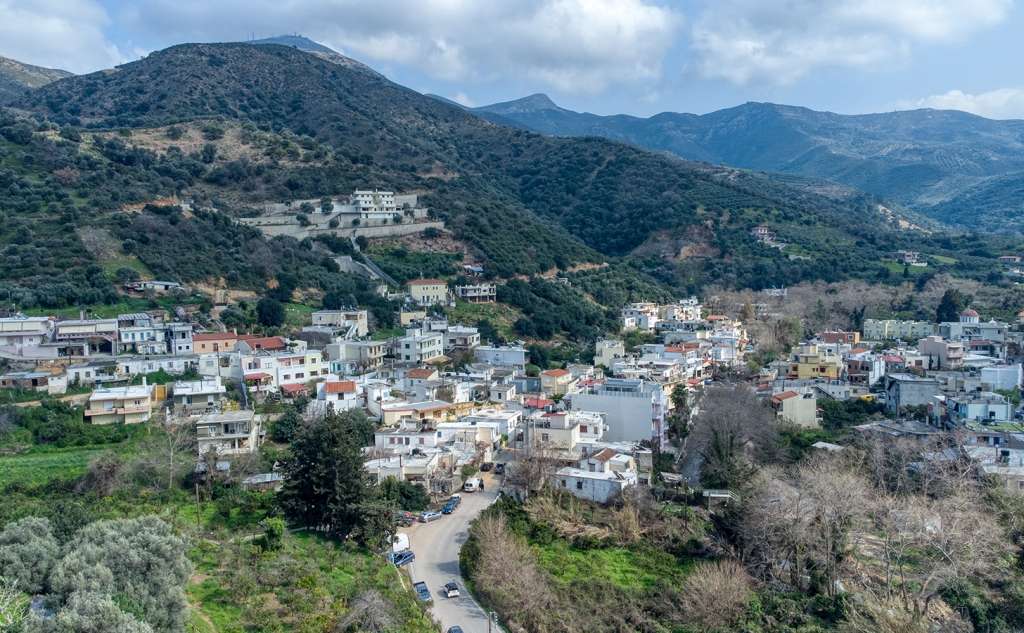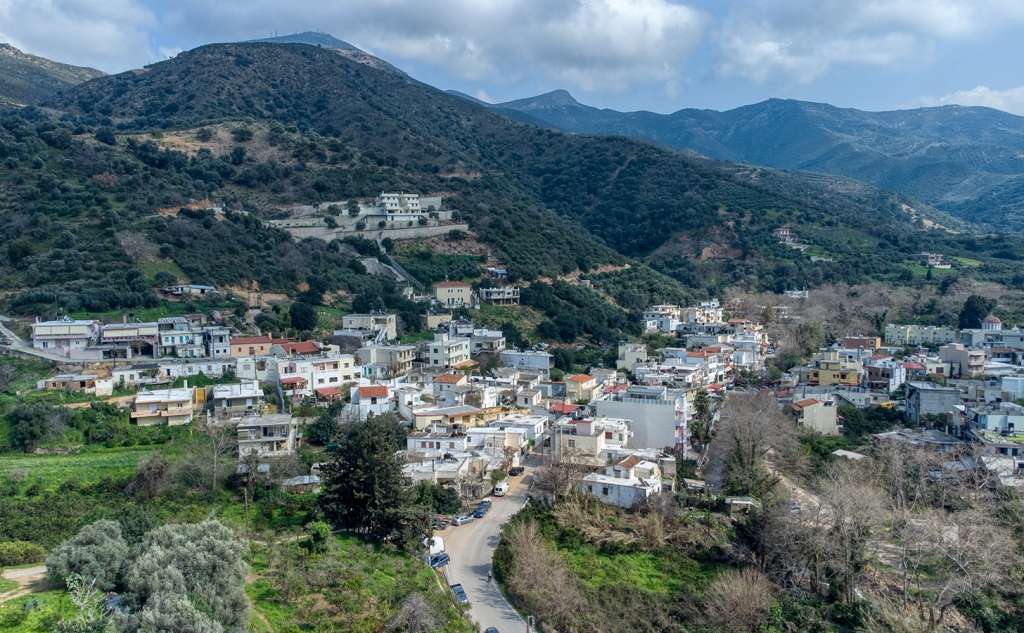





The settlement of Fodele is located 30 km west of Heraklion, in a lush valley with citrus fruits, and just 3 km from the shores of the Cretan Sea. It is built at an altitude of 60 metres and has about 550 permanent residents.
In the area of today's village was the ancient city of Pantomatrion (the port of Axos), whose name is preserved in the river. The cultivation of citrus fruit in Fodele follows the steps of a very long tradition. Fodele is also famous for its historical connection with the great Cretan painter Domenikos Theotokopoulos, known as El Greco, a representative of the hagiography of the Cretan School.
The current village was built in a later era and owes its name to the first settler, Fodele, which is referred to in Crete during the 13th century. The surname Fodelle is often found in documents of the Venetian occupation. In fact, in the systematic census conducted in 1577 by General Planner, the settlement is mentioned as Fodhele in the province of Mylopotamos. In 1595, in a report, the area of Fodele was noted, as well as the river of the same name. The same river is mentioned by the Venetian engineer Francesco Basilicata.
Fodele is the ideal destination for nature lovers. The river Pontomantris creates an idyllic landscape, while the network of paths (starting from the village square) offers a unique exploration experience among tall trees, waters and caves. In the village square, the visitors can enjoy their coffee or food under the shade of the ancient plane trees. Throughout the village, small churches "spring up", such as the church of the Annunciation, Agioi Pantes, Agios Georgios, etc.), while the historic Monastery of Agios Panteleimon stands out, built at an altitude of 170 meters. At a distance of just 3 km from the village is the homonymous beach, ideal for swimming and relaxing moments, while the ruins of medieval houses stand out in the northeast and northwest of the village.
In the village of Fodele, both busts of Domenikos Theotokopoulos stand out. One of the two is located in the square, under a plane tree that is over 1000 years old. It is a plaque with a marble base that has the figure of the painter embossed on the top and a dedication written in Greek and Spanish on the bottom: "THE SCHOOL OF HISTORY OF VALLIADOLITH UNIVERSITY OFFERS THIS PLATE, TAKEN OUT OF THE ROCK OF TOLEDO, IN MEMORY OF THE IMMORTAL GLORY OF DOMINIKOS THEOTOKOPOULOS. JULY 1934 ». This plate, together with two albums with copies of Theotokopoulos' works, was brought to Fodele in 1934 by eminent Spanish professors, together with the famous professor of archaeology, Tormo. The second bust of Theotokopoulos is the work of the excellent sculptor Apartis. He offered it in 1964, when the 300th anniversary of the great painter's death was celebrated.
When you are in the village, the old settlement of Skotini, where it is believed that Domenikos Theotokopoulos was born and raised, is worth visiting. There is also his house, in which, since 1998, the Museum of Domenikos Theotokopoulos has been operating, with the painter's workshop and several copies of his famous works. At a very close distance from the museum, the church of Panagia (church of the Assumption of the Virgin), built in the 11th century on the site of an early Christian basilica, dominates the area.
Finally, near the village of Fodele, the towers or "kouledes" emerge (Red Fodele Tower, Koules Fodele, Koules Koprokefala). These are towers dating back to the late Ottoman period, part of a broader defence plan to suppress the revolution.